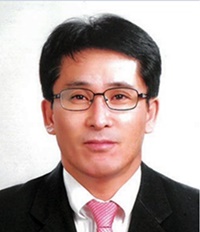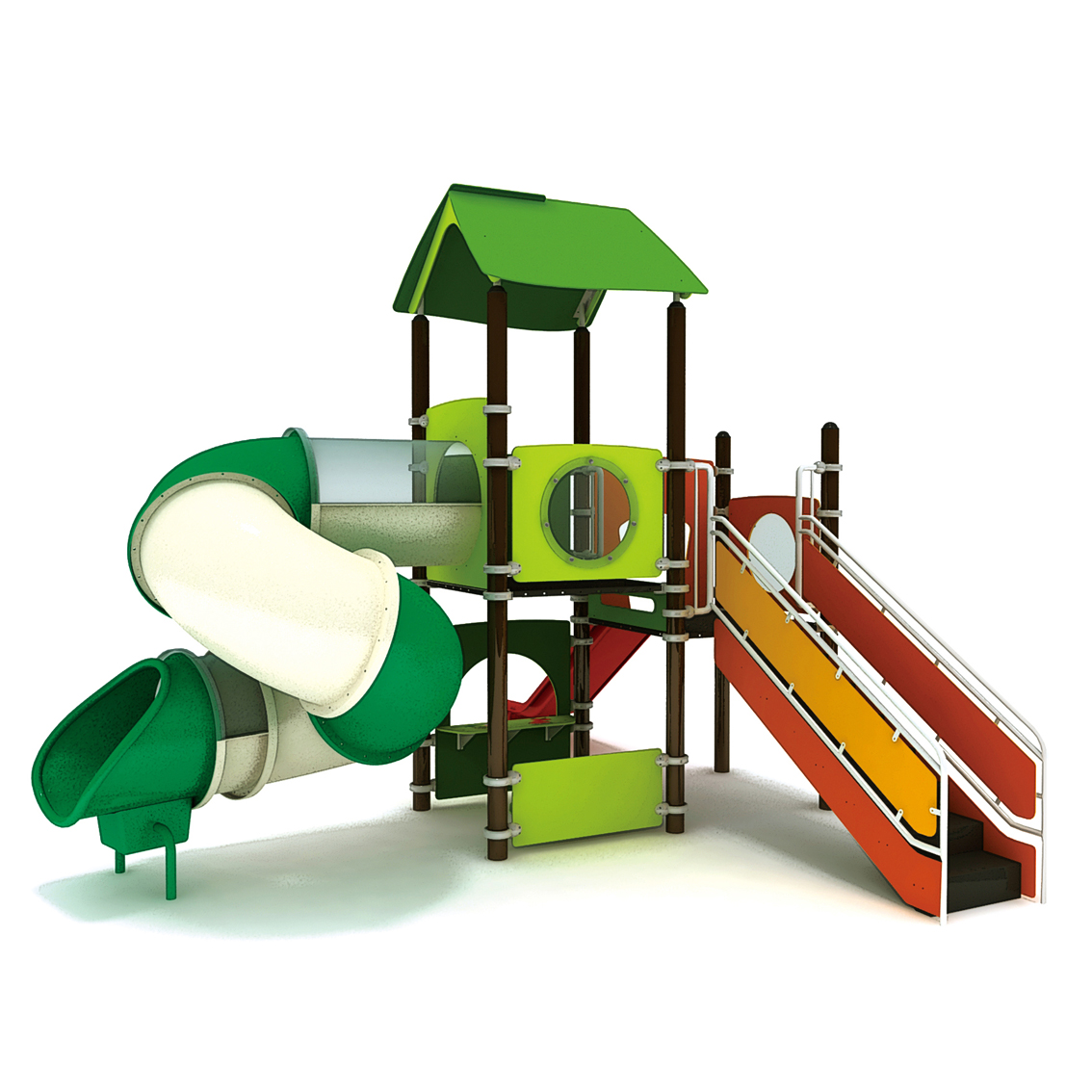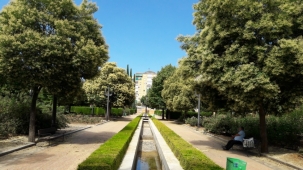[기고] 진주암(Perlite)을 이용한 수영장 수처리 시스템 (1)
글_박규백 신화아쿠아(주) 전무이사라펜트l기사입력2020-10-30
진주암(Perlite)을 이용한 수영장 수처리 시스템 (1)

글_박규백 신화아쿠아(주) 전무이사
Ⅰ. 서론
경제수준의 향상에 따라 워터파크, 스파, 수영장을 이용하는 고객은 점점 늘어나고 있는 반면에 수영장 수처리에 대한 대중의 이해도는 높지가 않아서 혼돈과 불신을 키우는 경우가 빈번하게 발생한다. 일반 대중을 모두 이해시키기는 어렵지만, 수영장 이용객을 대상으로 한 기본적인 수준의 수처리 시스템 정보를 제공하는 것은 각각의 수영장 운영사 측에서 담당해야 할 의무이자 중요한 고객서비스의 한 부분이라고 볼 수 있다. 물론 고객만족도 향상과 업체홍보 측면에서도 관련 정보제공은 도움이 될 수 있다.
몇 년 전, 모 신문사의 수영장 관련 기사가 많은 이들에게 공감과 분노를 일으킨 적이 있었는데, 국회 환경노동위원회 소속의원이 서울시 수영장 물 관리 실태자료를 제출받아 분석한 결과 수영장 물 교체기간이 평균 30일이라는 내용이었는데, “이렇게 물 교체기간이 긴 것은 수영장의 모든 물을 교체하는 데 시간과 비용이 많이 들기 때문인 것으로 보인다”라는 국회의원의 의견을 “서울시 수영장 돈 아끼려 물갈이 소홀”이라는 자극적 제하의 기사로 보도를 냈고, 이에 대해 많은 시민이 댓글로 너도나도 수영장 수질관리에 대한 불만을 성토했던 사례였다.
물론 수질기준이나 시설기준을 충족하지 못하고 행정처분을 당하거나 수질관리를 소홀히 해서 물이 더럽다고 고객 불만을 유발하는 수영장이 일부 있을 수 있다. 하지만 물을 ‘교체’하는 것에 대해 논점을 좁혀본다면, 단순히 ‘물값 아까워서’ 물 교체를 소홀히 하는 것이 아니라고 말할 수 있다.
법규상 수영장 물의 교체기간과 횟수에 대한 기준은 정해져 있지 않은 것이 사실이다. 하지만 1일 3회 이상 전체의 물이 여과기를 통과하도록 하고 잔류염소농도, 수소이온농도, 탁도, 과망간산칼륨소비량, 대장균군, 비소, 수은, 알루미늄 잔류량 등 법으로 정한 수질기준을 충족시켜야만 한다. 이 기준을 충족한 물은 깨끗한 물이라는 것이고, 교체할 이유가 없는 것이다. 매월 1회 이상 해당 지자체에서 채수(採水), 수질검사와 시설점검을 하고, 수영장에서 자체 수질검사도 진행하기 때문에 물 교체를 안 하는 것이 마치 수질관리를 안 하는 것으로 동일시되어서는 안 될 일이다. 전체 수영장 물을 교체하려면 단순히 물값만 소비되는 것이 아니다. 물을 빼고 다시 채우는 시간을 감안하면, 일주일에 한 번만 물을 교체한다고 해도 정상적인 시설운영은 불가능하다고 볼 수 있다.
가장 많이 소비하는 것을 가장 많이 절약할 수 있다. 대량의 물을 소비하는 수영장에서 가능한 물을 아끼고 절약하는 것은 비단 경제적인 절약 효과뿐 아니라 환경을 보호하고 에너지를 절약하는 사회적인 책임을 다하는 것이라고 할 수 있다.
Ⅱ. 진주암여과기술 소개(Introduction of Perlite Media Filtering)
1. 수영장 수처리 개요
수영장 수처리의 기본적 목적은 수영장용수를 수영하기에 안전하고 쾌적한 상태로 유지하는데 있다. 이를 좀 더 세분화하면 아래의 사항들로 요약할 수 있다.
(1) 물속 이물질, 오염물질을 걸러내어 물을 청명하게 한다.(2) 유해한 병원성 세균 또는 미생물이 증식하지 못하도록 약품 잔류농도를 유지한다.(3) 물에 독성이나 자극성이 없도록 유지한다.(4) 물에 불쾌한 냄새나 맛이 없도록 유지한다.(5) 수영장 물의 온도를 보정하여 일정한 수온을 유지한다.

[표 1] 수영장 수질관리의 기본요소
물의 청명도(Turbidity)는 수영장 수질관리를 논할 때 무엇보다 중요한 부분이다. 청명도는 당연히 위생적인 이유에서도 중요하지만, 이용객의 안전을 확보하는 측면에서도 중요한 요소다. 물속의 시야가 좋지 않으면 이용객 부상의 위험이 증가할 뿐 아니라, 안전요원이 부상자나 익수자를 식별하기 어렵기 때문이다. 좋은 수질을 유지하기 위한 가장 결정적인 요소는 여과장치라 할 수 있는데, 수처리 시스템이 부적절하면, 목표한 수질기준을 성취하는 것이 불가능하다. 물속의 이물질은 살균 시스템에도 부정적 영향을 미치는 것으로 보고된다. 미립자 상태의 부유물이 미생물의 보호막이 되어 소독제의 살균작용을 방해하기도 하며, 한편으로는 살균 소독제가 물속의 특정 유기물질과 반응하여 유해화합물을 생성하기도 한다. (Lovibond Water Testing 발행 Swimming and Spa Water Treatment 2012) 여과장치는 염소를 투입해도 죽지 않는 크립토스포리듐(와포자충)과 편모충 등의 기생충 및 알을 제거하기 위한 매우 중요한 장비다.

[그림 1] 크립토스포리듐(와포자충), 출처 : CDC(미국질병통제예방센터
와포자충은 4㎛ 이하의 필터로 제거할 수 있고, 좀 더 큰 편에 속하는 편모충은 7㎛ 이하의 필터로 제거가 가능하다(Lange et al.,1986). 그러나 일반적인 다층여과기의 공극은 30㎛~100㎛ 내외이므로 이러한 감염성 세균을 걸러내기에는 역부족이라 할 수 있다.

[그림 2] 편모충, 출처: CDS (미국질병통제예방센터)
World Aquatic Health Confernce에서 발표된 연구에 따르면 이상적인 프리 코트 여과 조건에서 반복적으로 테스트했을 때 진주암 여과기는 크립토스포리듐(와초자충)을 평균 99% 이상 제거하는 것으로 나타났다. 정확히는 평균 99.941% 제거하는 것으로 보고했는데, 가장 널리 사용되는 다층여과기는 크립토스포리듐을 평균적으로 31.3% 제거하는 것으로 나타났다. 다층여과기에 응집제를 첨가하면 여과성능이 향상되었지만, 향상된 여과 조건에서도 와포자충 제거율은 61.1%에 머물렀다. (출처 : Athletic Business, Paul Steinbach, 2008)
Water treatment system for swimming pools using perliteⅠ. IntroductionAs living standards increase, there has also been an increase in the number of visitors to water parks, spas and swimming pools. Meanwhile, the public’s understanding of water treatment used in swimming pools is still lacking, leading to mistrust and confusion. While it may be difficult for all laymen to understand water treatment, providing basic information on it to visitors of swimming pools form an important part of the obligation and customer service of pool operators. It can also help in improving customer satisfaction and promotion.A few years ago, a news article on swimming pools brought much anger among the public. At the time, a lawmaker in the Council for Environment and Labor in the National Assembly had the data on swimming pools analyzed. It showed that swimming pools only changed their water every 30 days on average. The lawmaker’s opinion was that “the time and effort required is the reason for infrequent change of the water in swimming pools.” But this was turned into a sensational headline, “Swimming pools run by Seoul City neglects to change water to save money.” The article prompted many citizens to add angry comments online.Of course, there may be some swimming pools that do not meet the standards for water quality or facilities, leading to fines or customer dissatisfaction. But the main reason for infrequent water change is not simply about ‘saving money’.It is true that current law does not stipulate the frequency or number of times for water change in swimming pools. But the standards for water quality are stipulated, including an obligation to have all the water pass through a filter at least three times a day and have the water be under a certain level in terms of the concentration of residual chlorine, hydrogen ions, turbidity, potassium permanganate, bacteria, arsenic, mercury and aluminum. Under the law, water that meets these criteria is considered clean water and therefore does not need to be changed. Given that the local government samples the water at least monthly to review the water quality and facilities and the swimming pool operators themselves conduct water quality tests, it is not correct to say that not changing the water equates to a neglect in water quality management. Changing all the water in a swimming pool not only costs money for the water but time to refill. If we assume all the water is switched once a week, it would be impossible to operate the swimming pool normally.It is the area where the highest level of consumption occurs that there is the greatest room for cost savings. If swimming pools that consume a large amount of water can conserve, not only would it save costs, but it would also help them live up to their social responsibility of conserving energy and the environment.Ⅱ. Perlite Media Filtering1. Overview of water treatment in swimming poolsThe main objective of water treatment in swimming pools is to maintain the water in a safe and pleasant state to swim in. This objective can be further broken down into the following.(1) To clarify the water by filtering out foreign matter and pollutants in the water.(2) To maintain a certain level of the concentration of treatment chemicals to prevent the growth of harmful bacteria or pathogens.(3) To maintain the water in a state free of toxicity or irritability.(4) To maintain the water in a state free of unpleasant odor or taste.(5) To maintain the water at a certain temperature
[Table 1] Basic elements of water quality management in swimming pools유량 및 순환량: Quantity of water flow and circulation시수의 희석: Dilution of the water여과장치: Filtering device소독 및 pH조절: Sterilization and pH controlTurbidity of water is most important when discussing water quality in swimming pools, not only in terms of hygiene but safety of the visitors. If the water is not clear, it can obstruct the view of swimmers leading to injuries. It also makes it difficult for safety guards to identify injured people. A key factor in maintaining good water quality is the filtering device. If the water treatment device is inadequate, it is impossible to achieve a desirable water quality.Foreign matter in the water are reported to negatively affect the sterilization system. Floating matter in the form of small particles can act as a protective shield for bacteria, obstructing the sterilization, or react with specific organic matter in the water to generate harmful compounds (Swimming and Spa Water Treatment 2012, published by Lovibond Water Testing). Filtering devices are very important in removing parasites such as Cryptosporidium, flagellates and their larvae that are not removed by chlorine.[Image 1] Cryptosporidium, Source: US CDCCryptosporidium can be removed by a filter of 4 ㎛ or finer, while flagellates can be removed by a filter of 7㎛ or finer (Lange et al.,1986). But the porosity of regular multi-layered filters are 30㎛~100㎛, making them insufficient to filter out such infectious bacteria.[Image 2] Flagellates, Source: US CDCStudies published in the World Aquatic Health Conference showed that the Perlite Filter removes an average of 99 percent or more of Cryptosporidium (waposporium) under stable pre-coat conditions. To be exact, 99.941% removal was reported on average, while multilayered filters which is the most widely used filtering machines in the worldwide removes 31.3% Cryptosporidium on average. The addition of chemicals(coagulant) to multilayer filters improves its performance, but even under the improved filtration conditions the Cryptosporidium removal rate remains only at 61.1% (Source: Athletic Business. Paul Steinbach). 2008)
- 글 _ 박규백 전무이사 · 신화아쿠아(주)
-
다른기사 보기
kb.park@swaqua.com
관련키워드l기고, 박규백, 신화아쿠아, 진주암, 수영장, 수처리





















